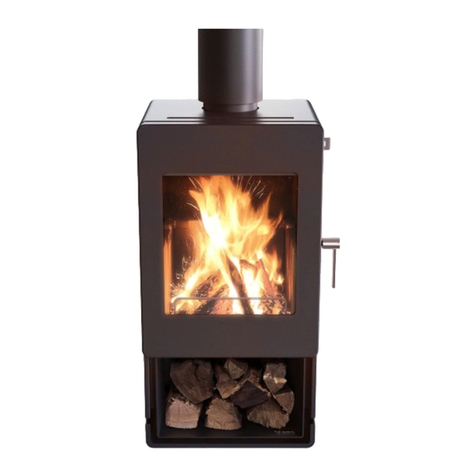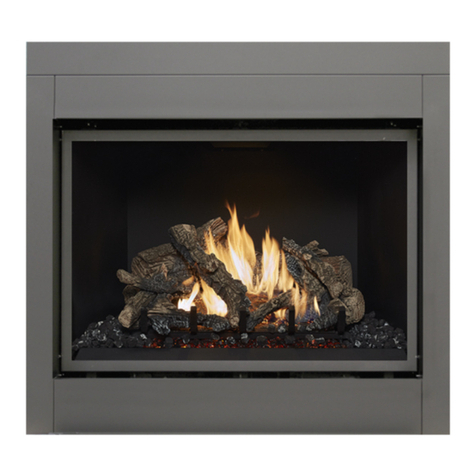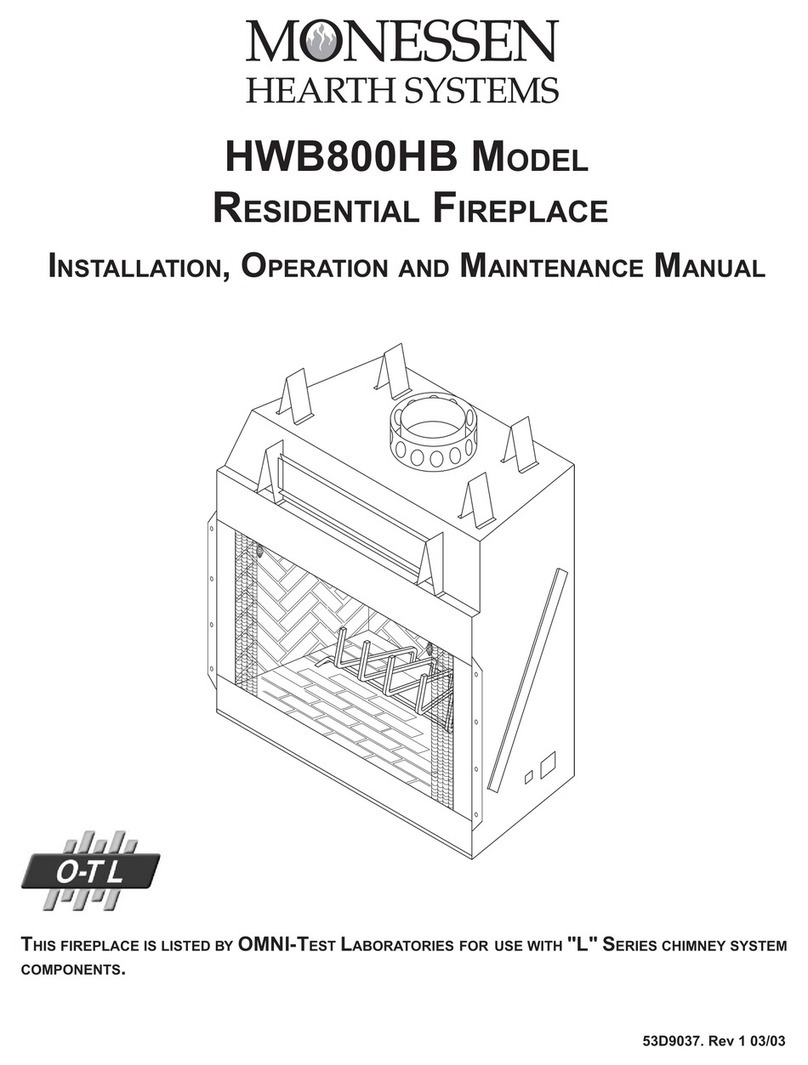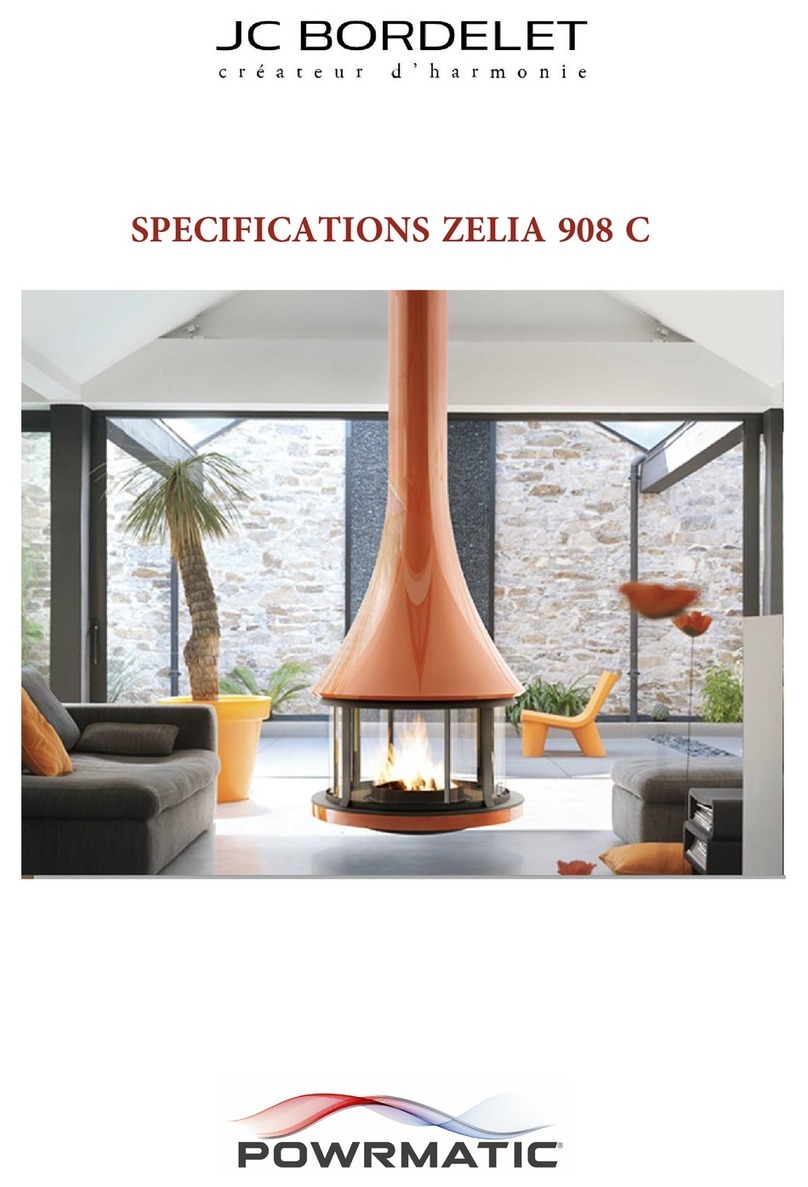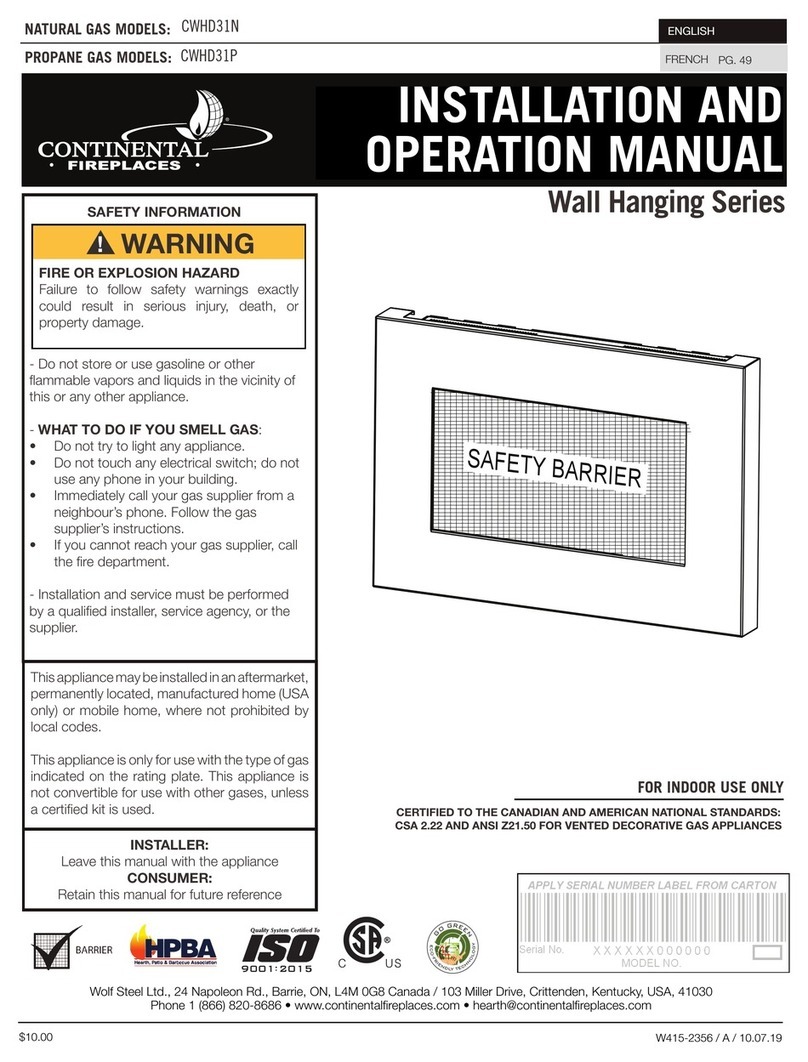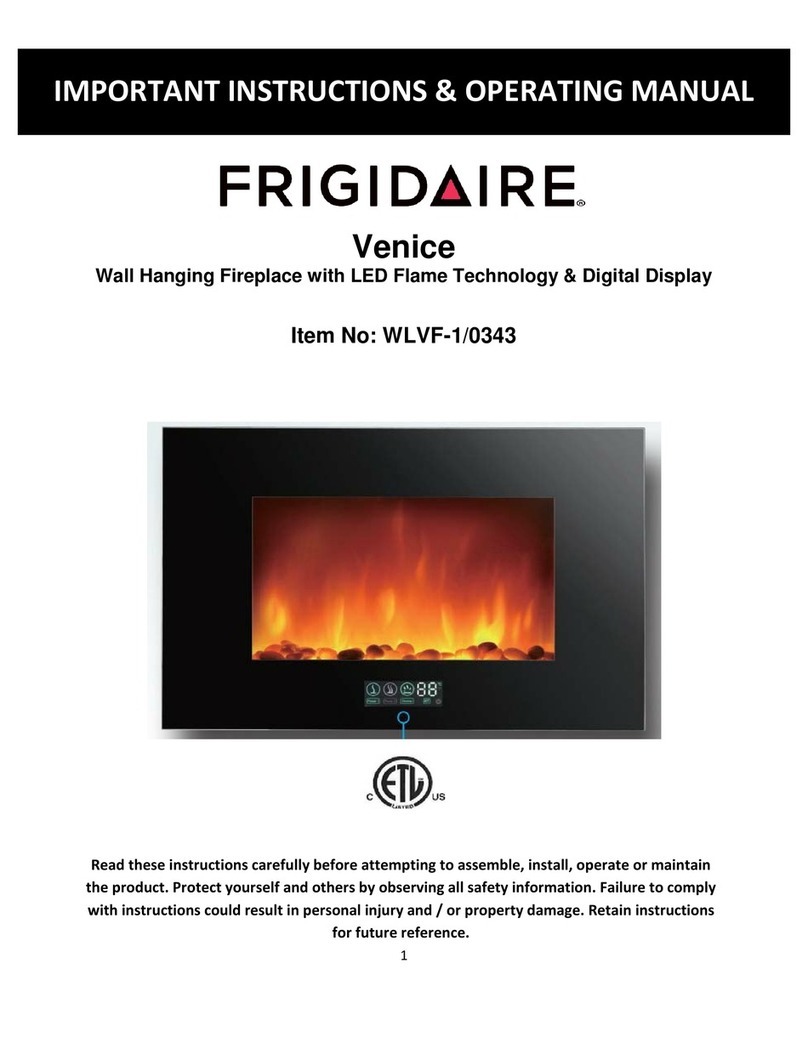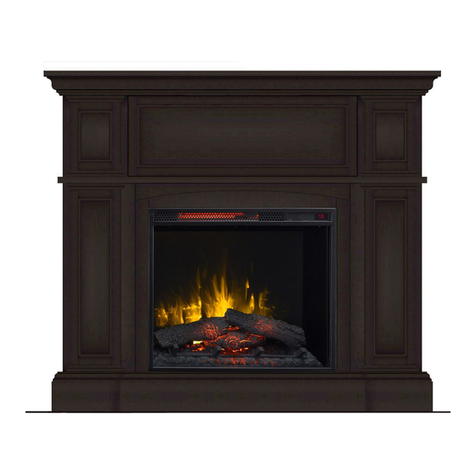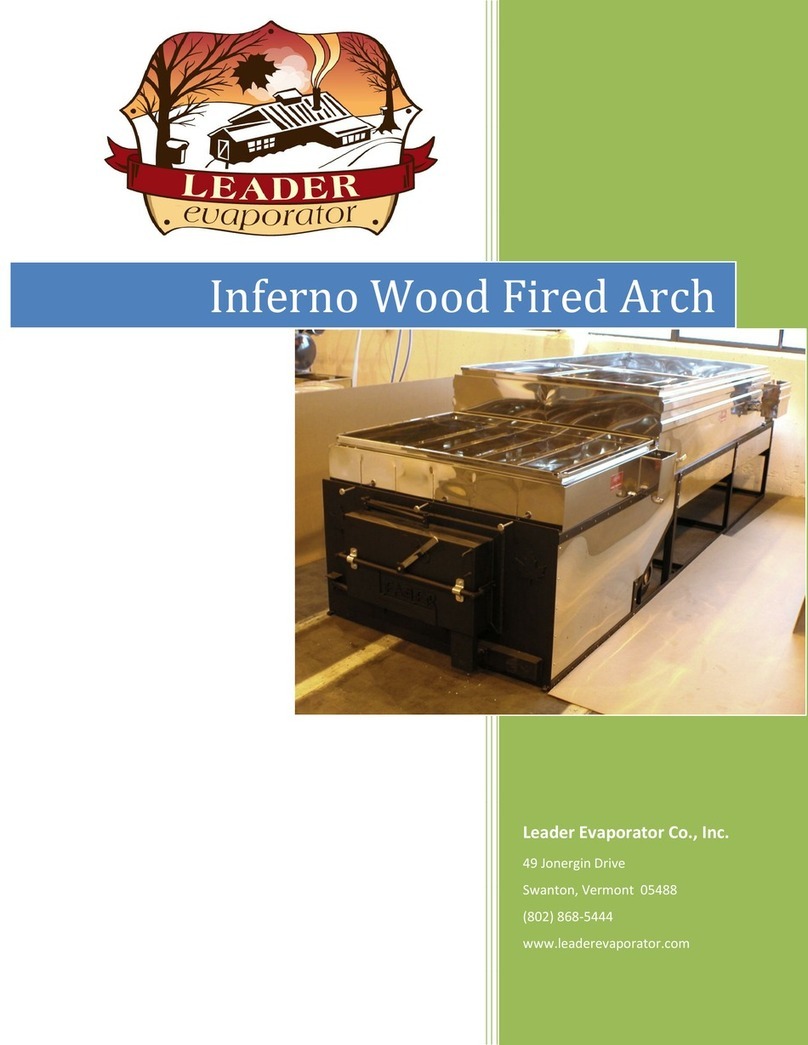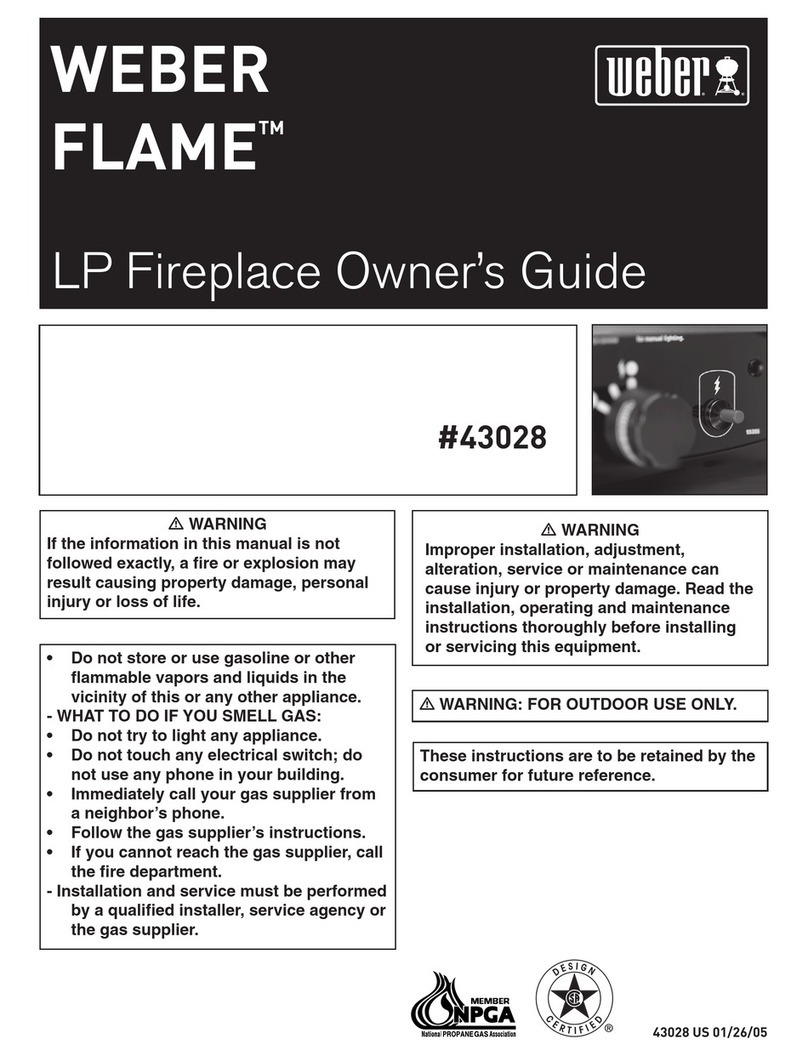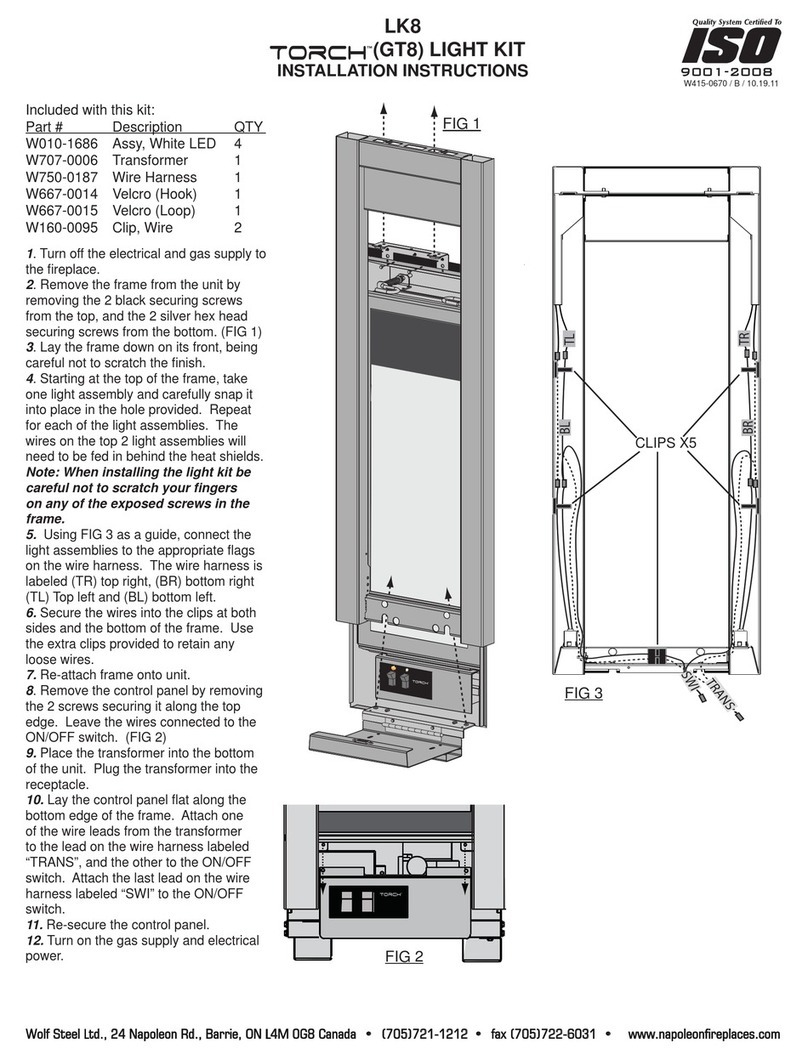4
1 CE declaration
We hereby declare that the design and construction of the
gas decorative heating appliance by Element4 complies
with the requirements of the Gas appliances directive�
Product: gas decorative heating appliance
Models: Modore 75H E4-19
Applicable EC-directives: 90/396/EEC
Applied harmonised standards: NEN-EN-613
NEN-EN-613/A1
1.1 Ceramic parts
This device is equipped with a ceramic re bed with heat-
resistant ceramic bres, being articial vitreous silicate
bres. Excessive exposure to this material can irritate
the eyes, skin and airways� Therefore, when dealing with
these materials, we recommend that dust emissions be
minimised as much as possible�
1.2 Renovation/construction
Discoloration of walls is a annoying problem and is
difcult to solve. As a replace is a heat source, air
circulation is created� Due to natural air circulation,
moisture, cigarette smoke and not yet cured volatile
components from paint, building materials and carpeted
oors and such are sucked in. These things can settle on
cold surfaces as soot�
With a newly plastered replace or after renovation, it is
recommended to wait at least 6 weeks before ring. The
building moisture must be totally evaporated from walls,
oor and ceiling.
2 Important safety information
The replace may only be installed by a qualied
installer/dealer� Follow the installation manual� We
urgently advise you to read the
installation directions properly�
Check the replace for transport damage, report
any damage immediately to your supplier�
Check if the details on the name plate
correspond with the local gas type and pressure�
The name plate is xed to the replace.
Make sure this is reachable at all times�
The replace must never be used without a window or
with a broken window, ue gases can then freely enter
the installation area�
The settings and the construction of the replace
may not be changed!
Parts, if required, should only be replaced with original
parts from the manufacturer�
Do not place additional imitation wood or glowing
material on the burner or in the combustion chamber�
This unit is designed for use with natural gas or LPG�
However, each unit is only suitable for the type of gas
that is specied at the time of the purchase.
Please note: once a kind of gas is specied, the replace
cannot burn on another gas� The type of gas your
replace requires, is indicated on the name plate.
This unit has been developed as a heating device and all
its parts, including the glass are therefore very hot during
use. (exceeding 100 degrees) never touch the replace
during use�
The heat coming from this unit, can affect materials in
the immediate vicinity� Curtains should hang at least 50
centimetre away�
Floors, walls and covers (ceilings) should be non-
combustible in the area where a re hazard is present due
to heat radiation of the appliance and/or chimney�
2.1 Using the replace the rst time
Stoke the re the rst time for a few hours on the highest
setting, so the paint gets a chance to harden� Provide
adequate ventilation, so any fumes being released can
be discharged� We recommend being as little as possible
present in the space during this process�
For information:
Combustible materials such as wood can catch re from
a temperature of 85 C� This can be within a few minutes
(at high temperatures > 200 C) to within a few weeks (at
low temperatures > 85 C)� An atmospheric unit can have
a temperature on the outside that can be up to 150 C�
If you use insulation material in the construction, use
white unbounded insulation wool, which is heat-resistant
up to 1000 degrees C� Never use glass or mineral wool�
These can release unpleasant odours with heat�





















